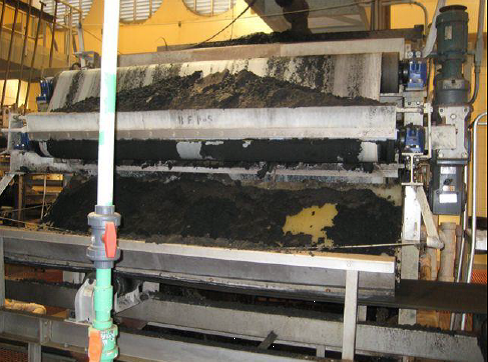Struvite Removal and Polymer Reduction
One of the essential functions in wastewater treatment is to separate the sludge into solid and liquid components. This can be done in different ways, such as by using belt presses or centrifuge equipment. The objective is to obtain a high degree of separation, with the resulting ‘cake’ having a high Total Solid value and the liquid having a low Total Suspended Solid value. One consequence of this separation process, especially in Anaerobic systems, is the formation of struvite, a hard mineral deposit formed from magnesium, ammonia and phosphates. This blocks equipment and pipes and requires onerous maintenance. HydroFLOW can protect against the formation of struvite, and even dissolve the existing material, without chemicals and without the need to interrupt production.
Another benefit of HydroFLOW in waste water treatment is the reduction of polymer. Polymer is added to the sludge to assist in the separation process and keep high cake solidity and low TSS in the fluid. HydroFLOW can allow a reduction in the polymer level used of around 20%, while maintaining or even improving cake solidity.
The below image is of a dewatering belt press in Orlando, Florida. Before installation the struvite form hard scale of up to 5mm thick, and the holes in the drum were bridged over. Within only 10 days the scale began to soften and fall off. By the end of the trial period there were only light traces of brittle scale less than one millimeter thick remaining. The flocculation provided by HydroFLOW allowed the amount of anionic polymer to be reduced until 20% less per day was used than before treatment with HydroFLOW.
Trial Results
Approx 20% reduction in polymer levels
Benefits seen in 10 days



